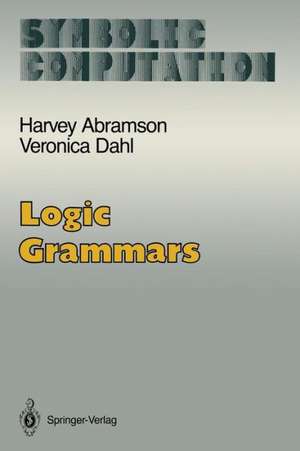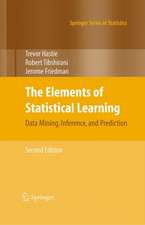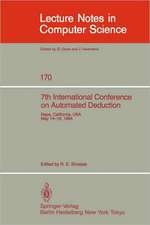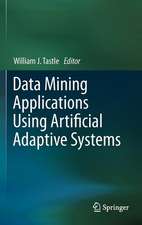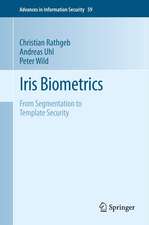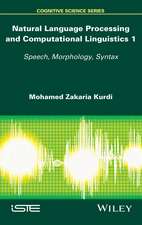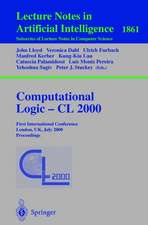Logic Grammars: Symbolic Computation
Autor Harvey Abramson, Veronica Dahlen Limba Engleză Paperback – 20 oct 2013
Din seria Symbolic Computation
- 20%
 Preț: 344.34 lei
Preț: 344.34 lei - 20%
 Preț: 640.91 lei
Preț: 640.91 lei - 20%
 Preț: 636.70 lei
Preț: 636.70 lei - 20%
 Preț: 638.17 lei
Preț: 638.17 lei - 20%
 Preț: 637.52 lei
Preț: 637.52 lei - 20%
 Preț: 628.59 lei
Preț: 628.59 lei - 20%
 Preț: 642.05 lei
Preț: 642.05 lei - 20%
 Preț: 631.37 lei
Preț: 631.37 lei - 20%
 Preț: 640.13 lei
Preț: 640.13 lei - 20%
 Preț: 648.85 lei
Preț: 648.85 lei - 20%
 Preț: 634.44 lei
Preț: 634.44 lei - 20%
 Preț: 637.52 lei
Preț: 637.52 lei - 20%
 Preț: 639.30 lei
Preț: 639.30 lei - 20%
 Preț: 635.60 lei
Preț: 635.60 lei -
 Preț: 387.69 lei
Preț: 387.69 lei - 20%
 Preț: 321.00 lei
Preț: 321.00 lei - 20%
 Preț: 336.55 lei
Preț: 336.55 lei - 20%
 Preț: 334.29 lei
Preț: 334.29 lei - 20%
 Preț: 630.23 lei
Preț: 630.23 lei - 20%
 Preț: 646.92 lei
Preț: 646.92 lei - 20%
 Preț: 637.34 lei
Preț: 637.34 lei - 20%
 Preț: 650.32 lei
Preț: 650.32 lei - 15%
 Preț: 628.14 lei
Preț: 628.14 lei - 20%
 Preț: 646.61 lei
Preț: 646.61 lei - 20%
 Preț: 641.74 lei
Preț: 641.74 lei - 20%
 Preț: 324.89 lei
Preț: 324.89 lei - 20%
 Preț: 698.01 lei
Preț: 698.01 lei - 20%
 Preț: 820.62 lei
Preț: 820.62 lei - 20%
 Preț: 644.99 lei
Preț: 644.99 lei - 20%
 Preț: 319.21 lei
Preț: 319.21 lei - 20%
 Preț: 744.71 lei
Preț: 744.71 lei - 20%
 Preț: 349.70 lei
Preț: 349.70 lei - 20%
 Preț: 322.79 lei
Preț: 322.79 lei - 20%
 Preț: 337.23 lei
Preț: 337.23 lei - 20%
 Preț: 546.19 lei
Preț: 546.19 lei
Preț: 324.71 lei
Preț vechi: 405.89 lei
-20% Nou
Puncte Express: 487
Preț estimativ în valută:
62.16€ • 63.93$ • 51.57£
62.16€ • 63.93$ • 51.57£
Carte tipărită la comandă
Livrare economică 19 februarie-05 martie
Preluare comenzi: 021 569.72.76
Specificații
ISBN-13: 9781461281887
ISBN-10: 1461281881
Pagini: 252
Ilustrații: XIV, 234 p.
Dimensiuni: 155 x 235 x 13 mm
Greutate: 0.36 kg
Ediția:1989
Editura: Springer
Colecția Springer
Seriile Symbolic Computation, Artificial Intelligence
Locul publicării:New York, NY, United States
ISBN-10: 1461281881
Pagini: 252
Ilustrații: XIV, 234 p.
Dimensiuni: 155 x 235 x 13 mm
Greutate: 0.36 kg
Ediția:1989
Editura: Springer
Colecția Springer
Seriile Symbolic Computation, Artificial Intelligence
Locul publicării:New York, NY, United States
Public țintă
ResearchCuprins
0. Introduction and Historic Overview.- I. Grammars for Formal Languages and Linguistic Research.- 1. What are Logic Grammars.- 2. Relation of Logic Grammars to Prolog.- II. Getting Started: How to Write a Simple Logic Grammar.- 3. Step-by-Step Development of a Natural Language Analyser.- 4. Choosing Internal Representations for Natural Language.- 5. Developing a Logic Grammar for a Formal Application.- III. Different Types of Logic Grammars — What Each Is Useful For.- 6. Basic Types of Logic Grammars.- 7. Building Structure.- 8. Modifier Structure Grammars.- 9. Definite Clause Translation Grammars and their Applications.- 10. Further Expressive Power — Discontinuous Grammars.- IV. Other Applications.- 11. Other Formalisms.- 12. Bottom Up Parsing.- V. Logic Grammars and Concurrency.- 13. Parsing with Committment.- Appendices.- I. Input/Output in Logic Grammars.- 1. Input of a Sentence.- II. Implementation of Logic Grammar Formalisms.- 1. SYNAL: Compiling Disc. Grammars to Prolog.- 2. A Short Interpreter for Static Discontinuity Grammars.- 3. Implementations of DCTGs.- 3.1. An Interpreter for Definite Clause Translation Grammars.- 3.2. Compiling Definite Clause Translation Grammars to Prolog.- 3.3. Typing DCTGs.- Literature.
